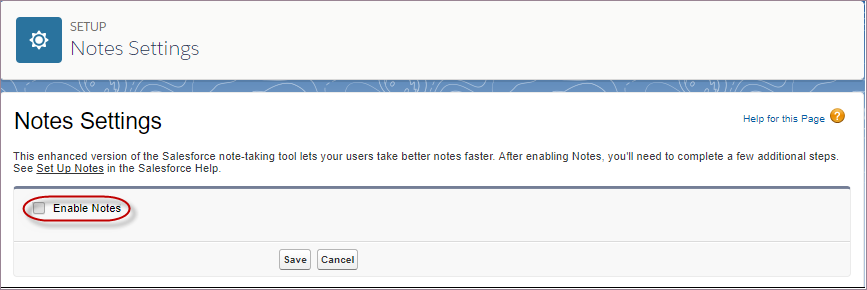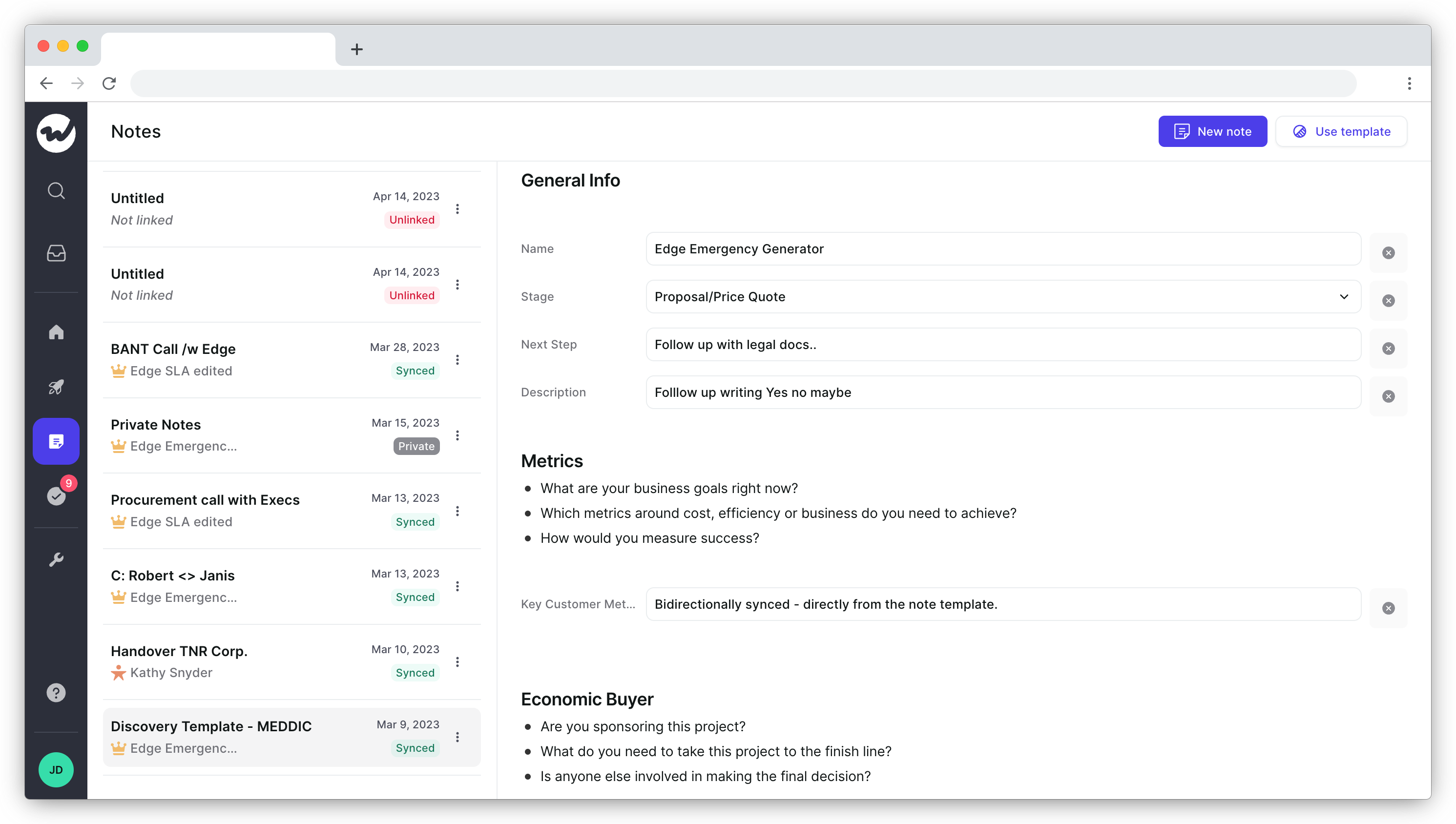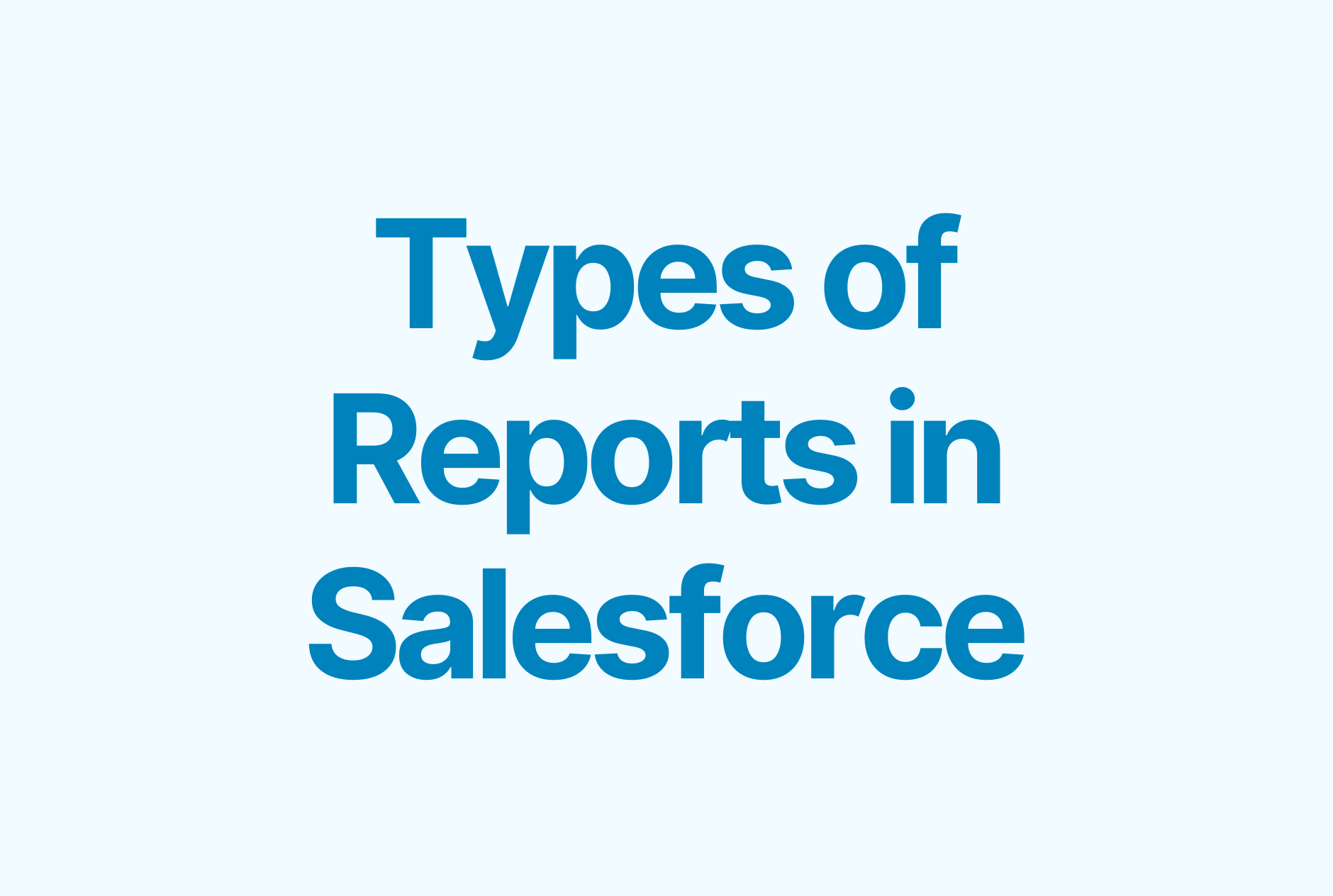Salesforce Notes: Everything You Need to Know

“It’s the feature nobody uses,” this is how a Salesforce developer replied when we asked them to define Salesforce Notes.
The sad truth is that sales teams prefer Apple Notes, OneNote, and even a pen and paper to Salesforce Notes.
Is that so because it boosts sales productivity? Definitely not. Having your sales notes spread across a variety of places leads to nothing but chaos in your sales process.
Trying to address sales reps’ pain, Salesforce has replaced its limited note-taking feature (which you may know as Notes and Attachments) with Enhanced Notes. The tool includes a range of helpful features that should help teams centralize customer notes and foster collaboration.
Is it any good? Let’s find the answer together.
Read on to learn about Salesforce Notes and discover how to access a superior note-taking feature for Salesforce.
Salesforce Notes and Attachments vs. Enhanced Notes
Salesforce Notes and Attachments is the former version of the note-taking feature in Salesforce. Also known as the Classic Notes tool, it allowed Salesforce users to take notes on opportunities and deals within the Salesforce interface.
It’s also a feature sales reps hardly ever used because of its limited functionality. Some of the features lacking in the legacy Notes tool were:
- Collaboration – It was challenging for sales reps to share notes and attachments with specific team members or groups.
- Storage limits – In Classic Notes, all the files (or attachments) had to be less than 25 MB in size, making it impossible to store large files or media, such as call recordings or videos.
- Search functionality – Sales reps couldn’t locate specific information quickly.
That’s why Salesforce replaced Notes and Attachments with Enhanced Notes, a rich-text note-taking tool. The new feature has enhanced sharing and collaboration capabilities, as well as increased storage capacity and improved search functionality.
After the update, the note-taking functionality has been split into two features: Notes and Files. So when enabling the new feature, you’ll need to convert your attachments to files to avoid losing critical information.
It’s worth mentioning that the Notes and Attachments feature hasn’t been completely diminished. If your admin hasn’t installed a new component yet, you may still be using the previous version of the tool.
Those who switch to Enhanced Notes can access the following capabilities:
- Rich text editing – You can now bold, italicize, or underline text, as well as insert hyperlinks and images in every new note you create.
- Text structure – It’s possible to organize note text with the help of bulleted and numbered lists.
- Increased storage – With Enhanced Notes, you can store up to 2 GB of notes per record.
- Improved collaboration – Sharing notes with different people and groups is made easier.
- Enhanced searchability – Notes can be related to multiple records.
- Version history – You can view previous versions of any existing note.
- Access management – Sales reps can create private notes to keep sensitive information to themselves.
Enhanced Notes has indeed improved the note-taking process in Salesforce. Now, sales teams can move away from Apple Notes, pen and paper, and similar solutions, and have an easier time accessing notes right within the Salesforce interface.
How to get started with Enhanced Notes in Salesforce
Where do you access this component? How do you enable it? Is it compatible with your plan at all? These are just a few questions you may be asking yourself every time you come across a new feature or add-on in Salesforce.
Fear not; we’ll guide you through your first steps to implementing Enhanced Notes:
To be able to start creating and managing notes, you’ll first need to enable Notes by going to Setup > Notes Settings.

In order to create notes for all objects (such as Account, Asset, Campaign, Case, Contact, Contract, Lead, Opportunity, and others), add the Notes related list to page layouts. To do it, take these steps:
- In the Object Manager tab, pick an object.
- Go to Page Layouts and select Related Lists.
- Drag Notes below Related Lists, and you’re all set.
Next, start the transition to Enhanced Notes. After you enable the new feature, Notes and Attachments will still be visible in page layouts. So now, you need to convert your classic notes and attachments to enhanced notes and files before you can remove the duplicates:
- Get Salesforce’s free Notes and Attachments Migration tool.
- Follow the user guide to install the package.
- Select objects to convert by checking the boxes.
- Make sure the number of modified documents doesn’t exceed the limit. Most often, it’s around 200,000 documents in a 24-hour period.
- Wait for the confirmation and delete converted notes.
Finally, disable Classic Notes by removing the Notes and Attachments related list from all of your page layouts.
A better way to take sales notes
Although Enhanced Notes is a great improvement from the classic Notes and Attachments feature, it still lacks the flexibility a sales rep would expect from a note-taking tool.
Weflow offers a superior way of creating notes that not only allows you to take better notes but also syncs them to Salesforce automatically. You can also set up note templates to ensure sales reps jot down the right information and follow your sales methodology.

Frequently asked questions about Salesforce notes
What are notes in Salesforce?
In Salesforce, notes are a feature that allows sales reps to create and manage text-based remarks or rich-media files on specific records or objects right within the Salesforce interface.
How do I edit notes in Salesforce?
Editing notes in Salesforce is simple:
- Choose the object where you created this specific note.
- Click on the name of the record the note is associated with.
- Go to the Related list tab and choose the note you want to edit.
- Click on Edit.
- When you’re done, save the changes.
* If someone else created the note, you need to ask them to give you editing rights by configuring Note Sharing Settings.
What is the difference between notes and attachments in Salesforce?
Both notes and attachments are used to store and manage information related to a specific record or object. Notes refer to text-based information, while attachments are external files that you can attach to your records.
What is the object for notes in Salesforce?
Salesforce objects are a way to store and group data related to your sales process. Standard objects in Salesforce are Accounts, Contacts, Leads, and Opportunities. You can create notes for any standard or custom object.
Can you search notes in Salesforce?
Yes, there’s an option to search for notes in the latest version of Salesforce’s note-taking tool.
Are notes private in Salesforce?
You can create private notes in Salesforce. It’s also possible to manage access rights for sensitive information. If you don’t define access preferences, all notes are public by default.













